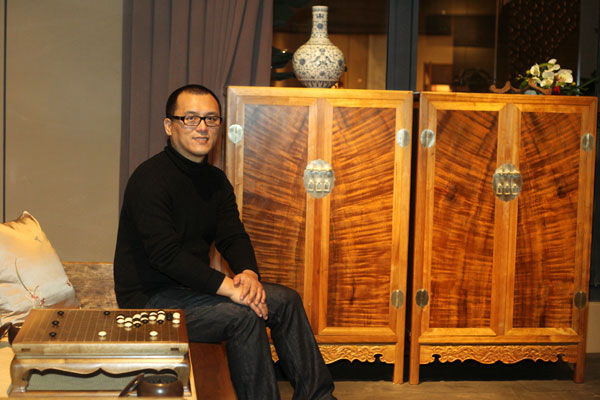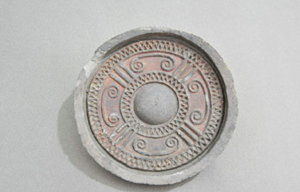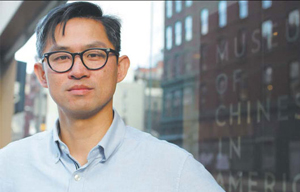
 'Taken 2' grabs movie box office crown
'Taken 2' grabs movie box office crown
 Rihanna's 'Diamonds' tops UK pop chart
Rihanna's 'Diamonds' tops UK pop chart
 Fans get look at vintage Rolling Stones
Fans get look at vintage Rolling Stones
 Celebrities attend Power of Women event
Celebrities attend Power of Women event
 Ang Lee breaks 'every rule' to make unlikely new Life of Pi film
Ang Lee breaks 'every rule' to make unlikely new Life of Pi film
 Rihanna almost thrown out of nightclub
Rihanna almost thrown out of nightclub
 'Dark Knight' wins weekend box office
'Dark Knight' wins weekend box office
 'Total Recall' stars gather in Beverly Hills
'Total Recall' stars gather in Beverly Hills
A fascination with wood
Updated: 2013-03-11 11:34
By Zhao Xu (China Daily)
|
||||||||
 |
|
An independent scholar of traditional Chinese culture, Mi Hongbin has a soft spot for wood. Wang Jing / China Daily |
Old wood is valued in China for its aged patina, its markings and a beauty that lives on long after the tree was felled. Zhao Xu talks to a scholar who has made it his calling to study and treasure wood.
Mi Hongbin raised his very first question about wood at the age of 7 as he watched a traditional Chinese doctor take his patient's pulse.
"What he did, basically, was to place his fingers gently on the patient's wrist and count the throbs," says Mi, an independent scholar with a special bent for the mystical and philosophical aspects of Chinese culture, and a soft spot for wood.
But it was the prop, not the healing that held the young man's attention.
"What intrigued me was not that he could come to a diagnosis through such a simple but mystified procedure, but the fact that it couldn't be performed without that small chunk of wood, on which the patient rested his wrist."
That "chunk of wood" has been part of the healing paraphernalia for ages, and is known as a "pulse pillow". Many have been used for decades, and all have been polished by constant use to a shiny patina, oiled by numerous encounters with human skin.
"To a child like me, it was a symbol, an essential part of a ritual," Mi recalls. "And I asked my father: 'Why wood? Maybe we could use something else, like a cotton-stuffed real pillow?'"
His answer was brief, but it took Mi the rest of his life to decipher the words.
"Wood cultivates people", his father had said.
Shouldn't it be the other way round, Mi had thought at the time. The question remained in Mi's head as extensive travels around the country drew him deeper and deeper into the study of wood, much like the concentric swirls that marks a tree's core.
"For the Chinese, wood represents two things: constancy in the face of a fickle world, and gentleness bestowed by age," says Mi.
Most Viewed
Editor's Picks

|

|

|

|

|

|
Today's Top News
Boston bombing suspect reported cornered on boat
7.0-magnitude quake hits Sichuan
Cross-talk artist helps to spread the word
'Green' awareness levels drop in Beijing
Palace Museum spruces up
First couple on Time's list of most influential
H7N9 flu transmission studied
Trading channels 'need to broaden'
US Weekly

|

|










